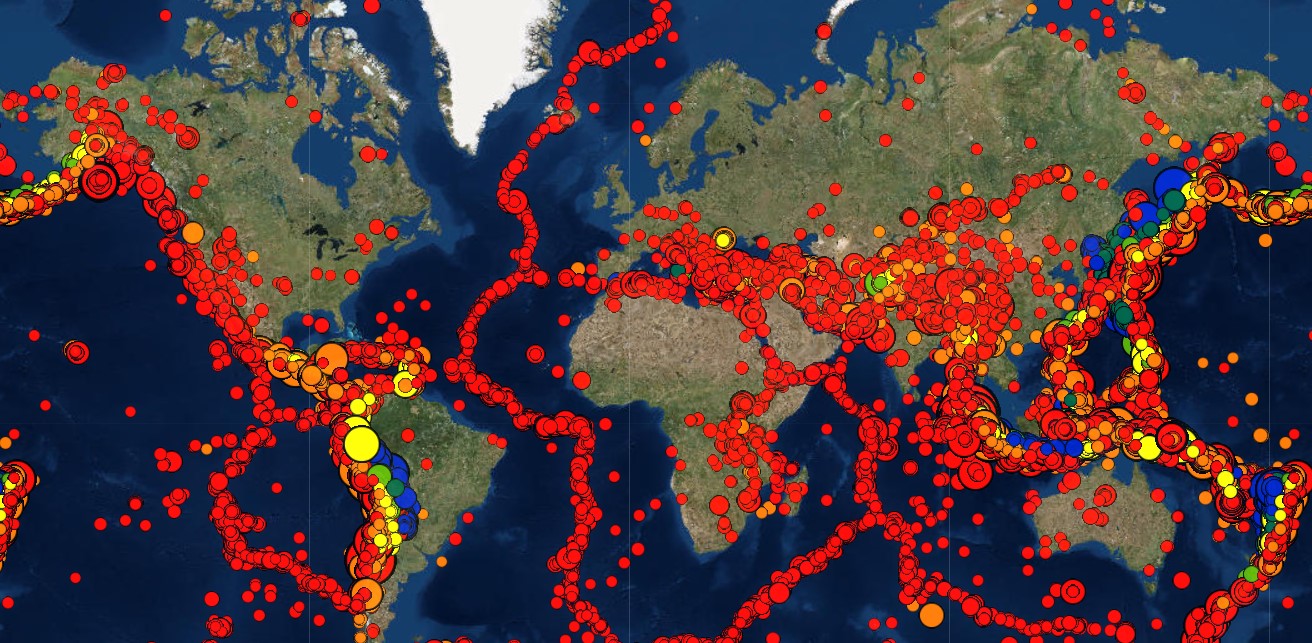
Seismic activity, also known as earthquakes, has fascinated and perplexed human beings for centuries. These incredible natural phenomena can cause devastating destruction and have a profound impact on the environment and the lives of people living in affected areas. From the rumbling of the ground to the shaking of buildings, earthquakes remind us of the immense power and unpredictability of the Earth’s crust.
In this article, we will delve into the fascinating world of seismic activity and uncover some astounding facts that will leave you in awe. From the largest earthquakes ever recorded to the countries most prone to seismic activity, get ready to be amazed by the forces that shape our planet.
Key Takeaways:
- Seismic activity, or earthquakes, can happen anywhere and have different magnitudes measured on the Richter scale. Understanding earthquake facts helps us prepare for and respond to these powerful natural events.
- The Pacific Ring of Fire and other seismic zones experience frequent earthquakes. Earthquake early warning systems and preparedness are crucial for minimizing the impact of seismic events.
Earthquakes Can Occur Anywhere
Contrary to popular belief, seismic activity can happen anywhere on Earth. While some areas are more prone to earthquakes, such as the Pacific Ring of Fire, no place is entirely exempt from the possibility of seismic events.
Earthquakes Have Different Magnitudes
Scientists measure the intensity of earthquakes using the Richter scale, which ranges from 0 to Each whole number increase on the scale represents a tenfold increase in the magnitude of the earthquake.
The Largest Earthquake Ever Recorded
The most powerful earthquake ever recorded was the Great Chilean Earthquake in 1960, with an estimated magnitude of 9.It caused significant damage and triggered a series of tsunamis.
Earthquakes Can Cause Tsunamis
When earthquakes occur underwater, they can generate tsunamis, which are large ocean waves that can travel across entire ocean basins. These tsunamis can cause widespread devastation when they reach the coastlines.
The Ring of Fire
The Pacific Ring of Fire is a region that experiences a high level of seismic activity. It encompasses the edges of the Pacific Ocean, where several tectonic plates converge, leading to earthquakes, volcanic eruptions, and the formation of trenches.
The Dead Sea Rift
The Dead Sea Rift, located in the Middle East, is another prominent seismic zone. This area is where the African and Arabian tectonic plates are pulling apart, resulting in frequent earthquakes.
The San Andreas Fault
The San Andreas Fault in California is one of the most studied and well-known fault lines. It marks the boundary between the Pacific Plate and the North American Plate and has been the source of many significant earthquakes throughout history.
Earthquakes and Buildings
The design and construction of buildings in seismic-prone areas are crucial for minimizing damage during earthquakes. Engineers implement specific techniques, such as base isolation and damping systems, to enhance the seismic resistance of structures.
Earthquakes Can Trigger Aftershocks
After a significant earthquake, aftershocks can occur. These are smaller tremors that follow the main event and can continue for days, weeks, or even months.
The Richter Scale
The Richter scale is named after American seismologist Charles F. Richter. It measures the amplitude of seismic waves produced by an earthquake to determine its magnitude.
Earthquake Early Warning Systems
Advancements in technology have led to the development of earthquake early warning systems. These systems can provide vital seconds or minutes of advance warning before shaking reaches populated areas, allowing people to seek shelter or evacuate.
The Great East Japan Earthquake
In 2011, Japan experienced a devastating earthquake known as the Great East Japan Earthquake. It not only caused immense destruction but also triggered a massive tsunami that devastated coastal regions and led to the Fukushima nuclear disaster.
The Intensity of Earthquake Shaking
The intensity of earthquake shaking can vary depending on several factors, including the depth of the earthquake’s focus, the distance from the epicenter, and the local geology.
Earthquake Forecasting
While scientists have made significant progress in understanding seismic activity, accurately predicting earthquakes remains a challenge. Researchers continue to work on improving earthquake forecasting models to increase preparedness.
Megathrust Earthquakes
Megathrust earthquakes occur when one tectonic plate subducts (dives beneath) another. These powerful earthquakes are responsible for some of the largest and most destructive seismic events in history.
Human Activities Can Trigger Earthquakes
In some cases, human activities like mining, reservoir-induced seismicity (caused by the filling of large reservoirs), and hydraulic fracturing (fracking) can induce seismic events.
Earthquake Preparedness is Essential
Given the unpredictable nature of earthquakes, being prepared is crucial. Creating emergency plans, securing heavy objects, and having essential supplies on hand can make a significant difference in mitigating the impact of a seismic event.
In conclusion, seismic activity is a natural occurrence that shapes our planet and can have significant consequences. Understanding the facts about seismic activity allows us to better prepare for and respond to these awe-inspiring but potentially destructive forces of nature.
Conclusion
Seismic activity is a fascinating and powerful natural phenomenon that has been shaping our planet for millions of years. These astounding facts about seismic activity highlight the immense forces at play beneath the Earth’s surface. From the largest earthquakes ever recorded to the intriguing relationship between seismic activity and volcanoes, there is a lot to learn and appreciate about this geological process. Understanding seismic activity not only helps us prepare for potential disasters but also enhances our understanding of Earth’s dynamic nature. So next time you feel the ground shake or hear news of a seismic event, remember these incredible facts and marvel at the incredible power of our planet.
FAQs
1. What causes seismic activity?
Seismic activity is primarily caused by the movement and interaction of tectonic plates. When these massive pieces of the Earth’s crust collide, separate, or slide past each other, they generate seismic waves that result in earthquakes and other forms of seismic activity.
2. How are earthquakes measured?
Earthquakes are measured using seismographs that detect and record the vibrations caused by seismic waves. The most commonly used scale to measure the intensity of earthquakes is the Richter scale, which assigns a numerical value based on the amplitude of seismic waves.
3. Can seismic activity be predicted?
While scientists have made significant progress in understanding seismic activity, accurately predicting earthquakes and volcanic eruptions is still a major challenge. Researchers use various methods and technologies to monitor and analyze seismic activity patterns, but predicting the time, location, and magnitude of an earthquake is not yet possible.
4. Are all earthquakes the same?
No, earthquakes can vary in size and intensity. The magnitude of an earthquake refers to the total energy released, which is measured on a logarithmic scale. Additionally, earthquakes can have different focal depths, ranging from shallow to deep, which can affect their impact on the surface.
5. Can seismic activity trigger volcanic eruptions?
Seismic activity can indeed trigger volcanic eruptions. When tectonic plates interact near a volcanic region, the movement can create pressure that can lead to the eruption of magma. In some cases, seismic activity is a precursor to volcanic activity, serving as a warning sign for potential eruptions.
Was this page helpful?
Our commitment to delivering trustworthy and engaging content is at the heart of what we do. Each fact on our site is contributed by real users like you, bringing a wealth of diverse insights and information. To ensure the highest standards of accuracy and reliability, our dedicated editors meticulously review each submission. This process guarantees that the facts we share are not only fascinating but also credible. Trust in our commitment to quality and authenticity as you explore and learn with us.


